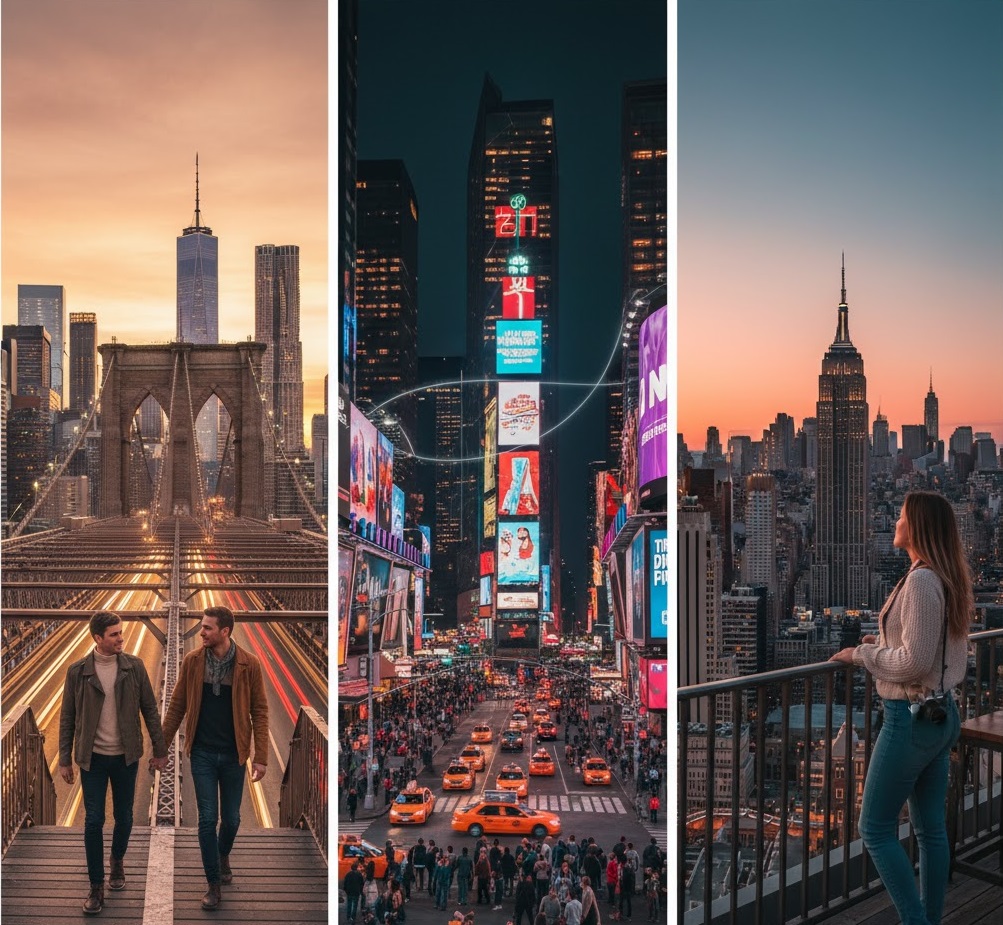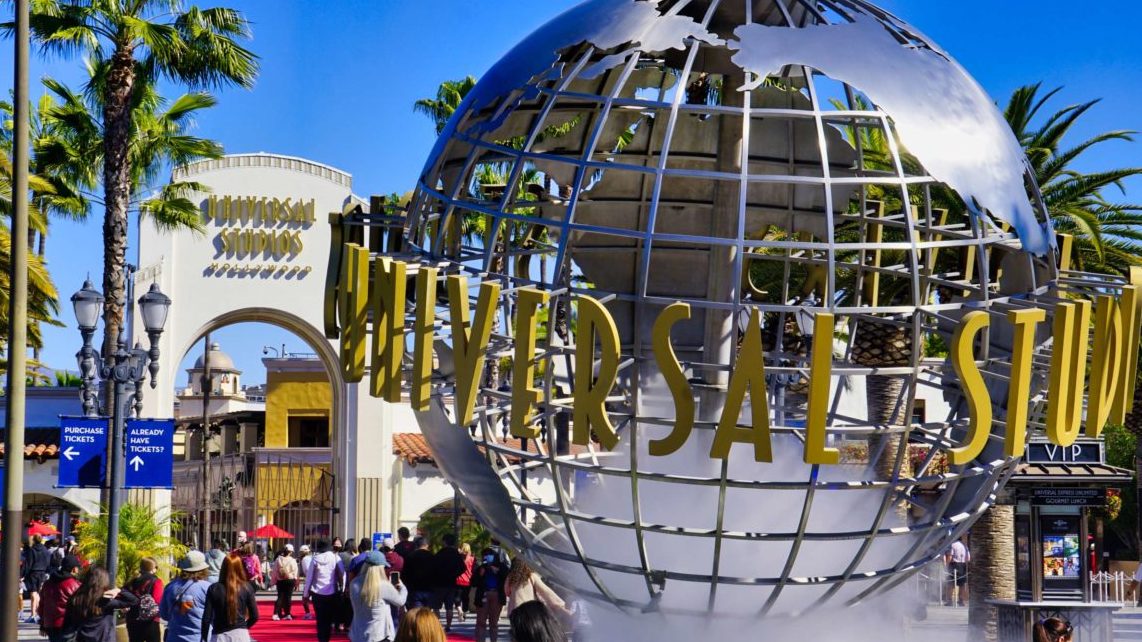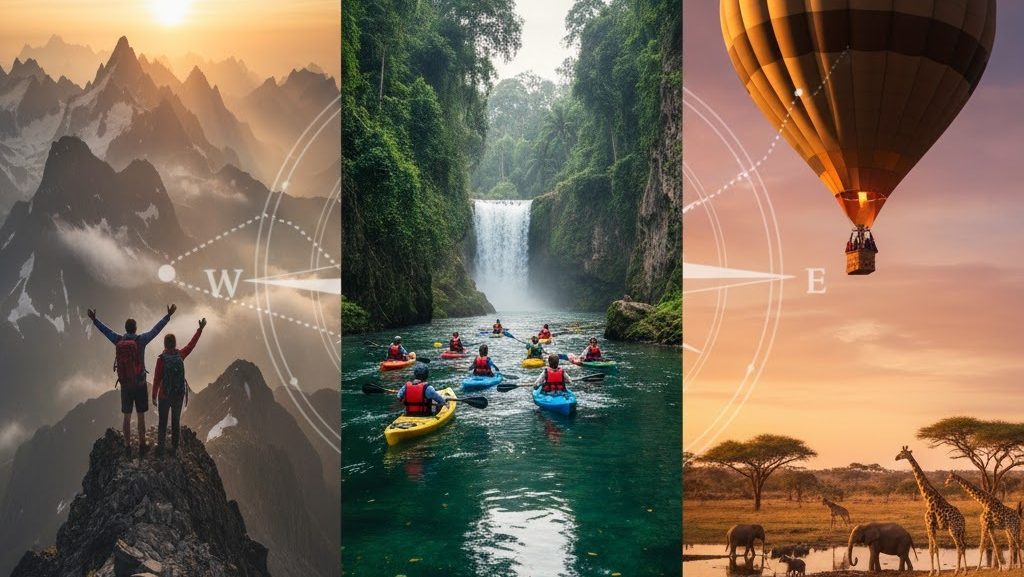Your Complete Insider’s Handbook to Exploring the City That Never Sleeps
New York City—often described as the beating heart of America—is more than a destination. It’s an experience. From the shimmering skyline of Manhattan to the artistic soul of Brooklyn and the cultural diversity of Queens, every corner of the city tells a story.
As one of the most visited cities in the world, NYC attracts over 60 million travelers annually, according to data from NYC & Company. But in 2025, the city is evolving even further—introducing new attractions, improved transportation systems, and a deeper focus on sustainability and cultural inclusivity.
This comprehensive New York City travel guide for 2025 will help you plan your trip like a pro—covering must-see attractions, hidden gems, travel tips, costs, dining, safety, and insider secrets—so you can make the most of your adventure in the city that never sleeps.
Why Visit New York City in 2025
New York City in 2025 is not just about iconic landmarks—it’s about experiencing innovation, art, and energy in motion. The city has undergone major updates post-pandemic, making it more accessible, eco-friendly, and traveler-focused than ever before.
Here’s why 2025 is the perfect time to explore NYC:
- Sustainability Movement: The city’s “Green New Deal” initiatives have expanded electric transport and eco-hotel options.
- Revitalized Landmarks: Places like Penn Station, Times Square, and Governors Island have seen major upgrades.
- Cultural Comeback: Broadway theaters, museums, and live venues are thriving again with record-breaking performances.
- Culinary Renaissance: Michelin-starred restaurants are now complemented by emerging food trucks, vegan cafes, and global street eats.
Top 10 Must-See Attractions in New York City (2025 Edition)
If it’s your first time in NYC—or even your tenth—you can’t miss these iconic destinations.
| Attraction | Location | Why Visit in 2025 |
|---|---|---|
| Statue of Liberty & Ellis Island | Lower Manhattan | Enhanced digital exhibits tell immigrant stories with VR integration. |
| Central Park | Manhattan | Expanded bike paths and pop-up performances make it livelier than ever. |
| Empire State Building | Midtown | Interactive observatory now features augmented reality skyline tours. |
| The High Line | Chelsea to Hudson Yards | New art installations and eco-gardens stretch the elevated park. |
| Times Square | Midtown | Redesigned pedestrian zones improve accessibility and reduce congestion. |
| Metropolitan Museum of Art (The Met) | Upper East Side | Showcasing new exhibitions including African contemporary art. |
| Broadway Theater District | Midtown | A record number of new productions, including AI-enhanced stage design. |
| Brooklyn Bridge & DUMBO | Manhattan/Brooklyn | Perfect sunset views and creative shops in revamped DUMBO warehouses. |
| One World Observatory | Financial District | Updated displays honoring resilience and future innovation. |
| Museum of Modern Art (MoMA) | Midtown | Cutting-edge digital and interactive art experiences. |
Each of these attractions reflects the spirit of a city constantly reinventing itself—bridging past and future.
Neighborhoods to Explore in 2025
New York City’s magic lies in its neighborhoods—each offering a distinct flavor, rhythm, and personality.
1. Manhattan – The Iconic Core
Home to NYC’s most famous landmarks, skyscrapers, and financial districts, Manhattan is the pulse of the city.
- Best for: First-time visitors, luxury shopping, cultural icons
- Don’t miss: Rockefeller Center, Central Park, and Broadway shows
2. Brooklyn – The Creative Soul
Brooklyn is where creativity meets culture. With art galleries, artisanal markets, and scenic waterfronts, it’s ideal for urban explorers.
- Best for: Art lovers, foodies, and indie vibes
- Don’t miss: Williamsburg nightlife, Brooklyn Botanic Garden, and Smorgasburg
3. Queens – The Global Melting Pot
Queens is the most ethnically diverse urban area in the world.
- Best for: Authentic global cuisines and local experiences
- Don’t miss: Flushing Meadows, Queens Night Market, and Citi Field
4. The Bronx – History and Culture
Once misunderstood, The Bronx is now a cultural hotspot and the birthplace of hip-hop.
- Best for: Music fans and family attractions
- Don’t miss: Bronx Zoo, Yankee Stadium, and The Bronx Museum of the Arts
5. Staten Island – Nature’s Retreat
For those seeking tranquility, Staten Island offers beaches, parks, and ferry views of the skyline.
- Best for: Families and outdoor enthusiasts
- Don’t miss: Staten Island Greenbelt and Staten Island Ferry (free!)
Where to Stay in New York City (2025 Guide)
Accommodation in NYC ranges from ultra-luxury hotels to cozy boutique stays and affordable hostels. Here’s a quick guide:
| Category | Average Price (Per Night) | Recommended Areas | Highlights |
|---|---|---|---|
| Luxury | $400 – $1000+ | Midtown, SoHo, Central Park South | Rooftop bars, skyline views, high-end amenities |
| Mid-Range | $200 – $400 | Chelsea, Williamsburg, Long Island City | Boutique charm, convenient subway access |
| Budget | $80 – $200 | Harlem, Queens, Lower East Side | Hostels, Airbnb, and student-friendly stays |
| Eco-Stays | $150 – $400 | Brooklyn, Downtown Manhattan | Sustainable design and low-carbon facilities |
Pro tip: Book at least 3–4 months in advance, especially during peak seasons (spring and winter holidays).
How to Get Around NYC in 2025
Navigating New York is part of the adventure. In 2025, the city’s transportation network has become more efficient, eco-friendly, and tech-integrated.
1. Subway and Buses
The MTA system covers every borough, now equipped with OMNY contactless payment and real-time tracking apps.
- A single ride: $2.90
- Best pass: 7-day unlimited MetroCard – $34
2. Biking and Scooters
Bike lanes have expanded citywide, and electric scooters are now legal and widely available through CitiBike and Lime.
3. Walking
Many of NYC’s greatest experiences are walkable—especially areas like Midtown, SoHo, and Greenwich Village.
4. Ferries
The NYC Ferry connects Manhattan with Brooklyn, Queens, and Staten Island, offering skyline views for just $4 per ride.
5. Rideshares and EV Taxis
Apps like Uber Green and Lyft now feature electric vehicle fleets, aligning with the city’s 2030 zero-emission goals.
Best Time to Visit New York City
Each season in New York brings its own energy:
| Season | Weather | Events & Highlights |
|---|---|---|
| Spring (Mar–May) | Mild, blooming parks | Cherry Blossom Festival, Tribeca Film Festival |
| Summer (Jun–Aug) | Warm, vibrant | Pride Parade, Governors Ball Music Festival |
| Fall (Sep–Nov) | Crisp, colorful | Halloween in Greenwich Village, Marathon Season |
| Winter (Dec–Feb) | Festive, snowy | Rockefeller Christmas Tree, New Year’s Eve at Times Square |
Best Overall Time: April–June and September–November for pleasant weather and fewer crowds.
Top 10 Food Experiences You Can’t Miss
Food is the heartbeat of NYC culture. With over 25,000 restaurants, it’s impossible to taste it all—but here’s where to start:
- Bagels & Lox at Russ & Daughters – A classic New York breakfast tradition.
- Pizza at Di Fara or Joe’s Pizza – Try a true New York slice.
- Hot Dogs from Nathan’s Famous – A Coney Island icon since 1916.
- Pastrami Sandwich at Katz’s Deli – Legendary since When Harry Met Sally.
- Cheesecake at Junior’s – Rich, creamy, and unmistakably New York.
- Street Food in Queens Night Market – Authentic bites from over 50 countries.
- Dim Sum in Chinatown – Steamed dumplings and buns worth waiting for.
- Fine Dining at Eleven Madison Park – Michelin-star vegan tasting menu.
- Brooklyn Brewery Tour – Explore craft beer culture.
- Chelsea Market Sampling Tour – A paradise for food lovers and photographers alike.
Travel Costs: How Much to Budget for a NYC Trip in 2025
| Expense Category | Average Daily Cost (Per Person) |
|---|---|
| Accommodation | $150 – $400 |
| Food & Drinks | $50 – $120 |
| Transportation | $10 – $25 |
| Attractions & Tours | $40 – $100 |
| Shopping & Souvenirs | $30 – $150 |
Estimated Weekly Total: $1,200 – $2,500
(Depending on lifestyle and accommodation type)
Safety Tips for Travelers in NYC
New York is one of the safest major cities in America, but as with any urban destination, caution and awareness go a long way.
- Avoid flashing valuables in crowded areas.
- Use official taxis or registered ride-share apps.
- Keep digital copies of important documents.
- Travel with a portable charger and emergency contact info.
- Stay aware in subway stations late at night.
Research from New York University’s Department of Urban Studies highlights that tourism density has improved urban safety perception, with more surveillance, lighting, and public transport security enhancements.
The Rise of Smart Tourism in NYC
New York’s embrace of technology has transformed the visitor experience.
- AI-powered travel apps offer personalized itineraries.
- Augmented reality walking tours bring historical events to life.
- Smart hotel systems use IoT for energy efficiency and comfort control.
- Digital museum passes simplify entry to over 80 attractions.
According to a 2024 MIT Sloan School of Management study, integrating smart tourism technologies improves traveler satisfaction and reduces logistical stress by up to 35%.
Cultural Etiquette and Local Insights
- Tipping: 15–20% in restaurants, $1–2 per drink at bars.
- Language: English is primary, but you’ll hear 200+ languages across the city.
- Dress Code: Casual is fine, but trendy attire fits in downtown and nightlife areas.
- Pace: Expect fast walking, quick service, and minimal small talk—New Yorkers are busy but friendly when approached respectfully.
Sustainable and Eco-Friendly Travel Options
- Stay at LEED-certified hotels like 1 Hotel Brooklyn Bridge.
- Use public transportation or CitiBike instead of car rentals.
- Dine at zero-waste restaurants such as Rhodora Wine Bar.
- Shop at local farmers markets and eco-conscious stores.
Research from Columbia University’s Earth Institute shows that travelers who practice sustainable tourism not only reduce environmental impact but also report higher levels of satisfaction due to authentic engagement with local communities.
Frequently Asked Questions (FAQs)
1. What is the best way to save money on NYC attractions?
Purchase a New York CityPASS or Go City Explorer Pass, which provides discounted access to multiple top attractions.
2. Is New York City safe for solo travelers in 2025?
Yes. NYC remains one of the safest large cities in the U.S., especially in tourist-friendly neighborhoods like Midtown and Brooklyn Heights.
3. How many days do I need to explore NYC properly?
Ideally, spend 5–7 days to experience a mix of attractions, neighborhoods, and food adventures.
4. What should I pack for a trip to New York?
Comfortable shoes, layered clothing, a travel adapter, reusable water bottle, and compact umbrella.
5. Can I visit New York on a tight budget?
Absolutely. Stay in hostels, eat at food trucks, use the subway, and enjoy free attractions like Central Park and the Staten Island Ferry.
6. Are there any new attractions in NYC for 2025?
Yes—expect expanded sections of Hudson Yards, immersive digital art spaces like ARTECHOUSE, and the new Green Loop pedestrian network connecting major districts.
7. Do I need travel insurance for a trip to New York?
While not mandatory, it’s highly recommended for medical coverage, cancellations, and emergencies.
8. How do I get from the airport to Manhattan?
Use the AirTrain JFK, LaGuardia Link Q70, or ride-shares. Travel time ranges from 30–60 minutes depending on traffic and location.



